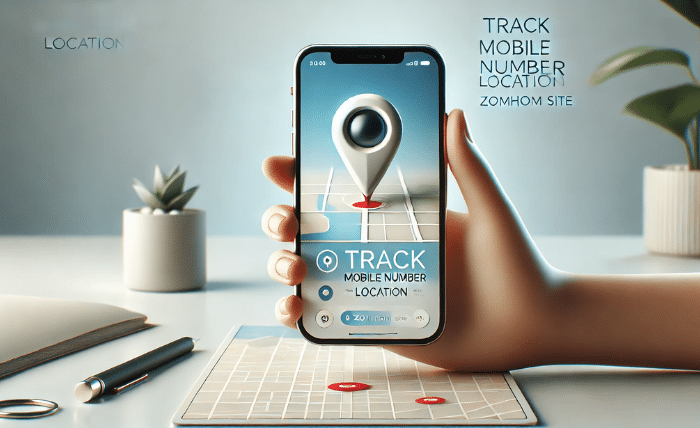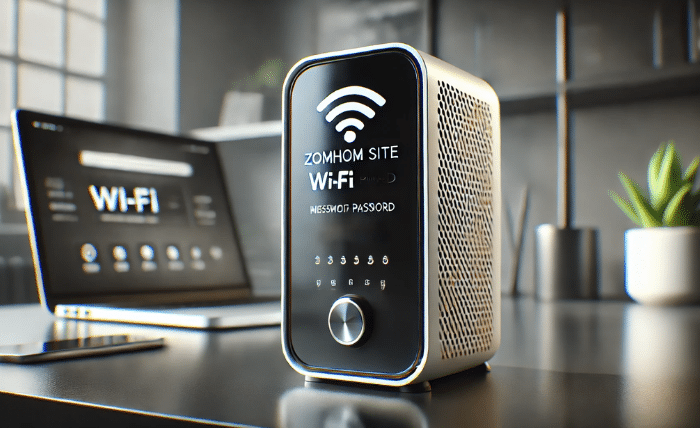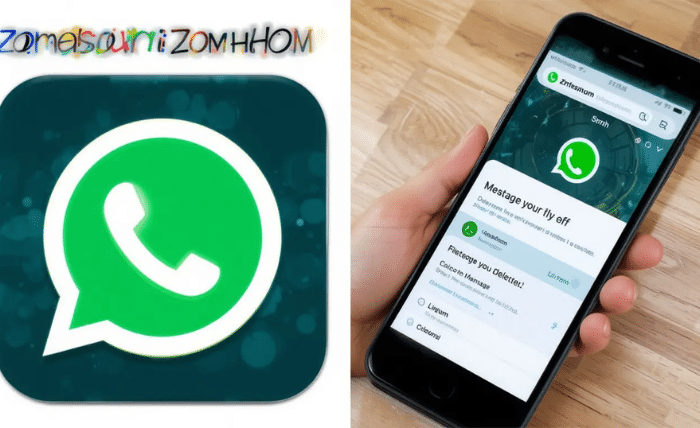In today’s digital age, our phones have become an essential part of our daily lives, serving as a hub for communication and information. One of the most useful features of modern phones is the ability to view and manage call history. This comprehensive guide will help you navigate the intricacies of call history, from finding and understanding your call logs to managing them effectively across various devices.
How do I find my call history on different devices?
Finding your call history is a crucial skill for managing your communication effectively. The process may vary depending on the type of device you use, but the underlying principle remains the same. Let’s explore how to access call history on different devices, including the latest smartphones and traditional landline phones.
Locating call history on Android phones
For Android users, accessing call history is a straightforward process. Simply open the Phone app on your device and tap on the “Recents” or “Call Log” tab. This will display a list of your recent calls, including incoming, outgoing, and missed calls. Android phones often offer advanced features that enable users to filter calls by type or search for specific entries. Some devices even allow you to sync your call history across multiple devices linked to your Google account, providing seamless access to your communication data.
Accessing call logs on iPhones
iPhone users can view their call history by opening the Phone app and tapping on the “Recents” tab. The iOS interface presents a clean and organized view of your call logs, making it easy to identify caller information and call types. Apple’s ecosystem also allows for continuity between devices, so you can access your call history on your iPad or Mac if you’re signed in with the same Apple ID. This technology advancement ensures that your communication data is always at your fingertips, regardless of which device you’re using.
Viewing call records on landline phones
While mobile phones dominate the communication landscape, many Indians and people worldwide still use landline phones. Most modern landline phones come equipped with caller ID and call history features. To access your call logs on a landline, look for a button labeled “Call Log” or “Caller List” on your phone’s keypad. Some models may require you to enter a menu and navigate to the call history section. Although landlines may not offer as much functionality as smartphones, they still provide valuable information about your calling patterns.
What information does the call history app typically display?
Call history apps are designed to provide users with comprehensive information about their communication activities. Understanding the data presented in these apps can help you make the most of this feature and gain insights into your calling habits.
Understanding call duration and timestamps
One of the key pieces of information displayed in call history is the duration of each call. This data can be particularly useful for those who need to track their phone usage for business or personal reasons. Timestamps are another crucial element, showing the exact date and time of each call. This information can help you reconstruct timelines or verify when specific conversations took place. Some advanced call history apps even allow you to sort your calls by duration or date, making it easier to find particular entries.
Identifying caller information and contact details
Call history apps typically display the phone number and name (if saved in your contacts) of each caller. This feature is invaluable for quickly identifying who you’ve been in touch with. Many apps also provide quick access to contact details, allowing you to tap on an entry to view more information or initiate a new call. Some advanced apps may even integrate with other services to provide additional details about unknown callers, such as their location or business information.
Recognizing call types (incoming, outgoing, missed)
Call history apps use visual cues to help users distinguish between different types of calls. Incoming calls are often represented by an arrow pointing inward, outgoing calls by an arrow pointing outward, and missed calls by a red icon or text. This visual categorization makes it easy to quickly scan your call log and identify patterns in your communication. Some apps also allow you to filter your call history by these categories, enabling you to focus on specific types of calls when reviewing your logs.
How can I manage and organize my call history effectively?
Effective management of your call history can help you stay organized and make the most of this valuable information. There are several strategies and features you can use to keep your call logs tidy and useful.
Sorting and filtering call logs
Many call history apps offer sorting and filtering options to help you find specific calls or analyze your communication patterns. You can typically sort calls by date, duration, or frequency. Some apps also allow you to filter calls by type (incoming, outgoing, or missed) or by contact. These features can be particularly helpful when you’re trying to locate a specific call or want to get an overview of your communication with a particular person or business.
Creating favorites or priority lists
To streamline your call management, consider creating a list of favorite or priority contacts. Most smartphones allow you to star or flag important contacts, making them appear at the top of your call history. This feature can save you time when you need to quickly find and call your most frequent contacts. Some advanced apps even allow you to create custom groups or tags for contacts, further enhancing your ability to organize and prioritize your communications.
Syncing call history across multiple devices
In today’s connected world, many people use multiple devices for communication. Syncing your call history across these devices can ensure that you always have access to your complete communication record. For Android users, this often involves linking your devices to your Google account. iPhone users can take advantage of iCloud to sync call history across Apple devices. Some third-party apps also offer cross-platform syncing solutions, allowing you to access your call history on both mobile devices and computers.
What are the benefits of regularly reviewing my call history?
Regularly reviewing your call history can provide valuable insights into your communication habits and help you identify areas for improvement in both personal and professional contexts.
Tracking communication patterns
By analyzing your call history, you can gain a better understanding of your communication patterns. This insight can help you identify trends, such as the times of day when you’re most active on the phone or the contacts you communicate with most frequently. This information can be useful for optimizing your schedule or improving your time management. For businesses, tracking communication patterns can help in understanding customer behavior and improving service delivery.
Identifying missed business opportunities
For professionals and business owners, reviewing call history can help identify missed opportunities. Unanswered calls or delayed responses to important contacts could represent lost business or networking chances. By regularly checking your call logs, you can ensure that you follow up on important calls and maintain strong relationships with clients and colleagues. This practice can be particularly beneficial for Indians working in global businesses, where timing and responsiveness are crucial.
Monitoring personal call habits
On a personal level, reviewing your call history can help you become more aware of your phone usage habits. You might notice that you’re spending too much time on certain calls or not dedicating enough time to staying in touch with important people in your life. This awareness can lead to more balanced and intentional communication habits, improving your personal relationships and overall well-being.
How do I delete or clear my call history?
There may be times when you want to delete or clear your call history for privacy reasons or to free up space on your device. Most phones and call history apps offer several options for managing and deleting call logs.
Removing individual call entries
If you want to delete specific calls from your history, most devices allow you to remove individual entries. On smartphones, this typically involves swiping left on the call entry or tapping and holding to bring up a delete option. This selective deletion can be useful when you want to remove sensitive or irrelevant calls while keeping the rest of your history intact.
Clearing entire call logs
For a more comprehensive clean-up, you can usually clear your entire call history at once. On most smartphones, you can find this option in the settings menu of your phone app. Be cautious when using this feature, as it will remove all records of your past calls. Before proceeding, consider whether you might need this information in the future for personal or professional reasons.
Setting up automatic call history deletion
Some advanced devices and apps offer the option to set up automatic deletion of call history after a certain period. This feature can be particularly useful for maintaining privacy and managing storage space on your device. You might set your call history to delete automatically after 30 days, for example. This ensures that your recent calls are always available while older, less relevant entries are regularly cleared.
Can I download or export my call history for record-keeping?
In some cases, you may want to keep a more permanent record of your call history. Many devices and apps offer options for exporting or downloading your call logs for safekeeping or analysis.
Exporting call logs to spreadsheets
Many smartphones and third-party apps allow you to export your call history to a spreadsheet format, such as CSV or Excel. This can be particularly useful for business purposes, allowing you to analyze your call data in more detail or integrate it with other business records. The exported data typically includes information such as call duration, timestamps, and contact details, providing a comprehensive overview of your communication history.
Using third-party apps for call history backup
There are numerous third-party apps available that specialize in backing up and managing call history. These apps often offer advanced features such as cloud storage, cross-platform syncing, and detailed analytics. Some popular options include Call Log Backup & Restore and SMS Backup & Restore. When choosing a third-party app, be sure to research its privacy policy and user reviews to ensure it meets your security standards.
Saving call records for legal or business purposes
In some professions, maintaining detailed call records is a legal or regulatory requirement. If you need to keep long-term records of your calls, consider setting up a system for regularly exporting and securely storing your call history. This might involve creating a digital archive or even printing physical copies of your call logs. Always ensure that your record-keeping practices comply with relevant data protection and privacy laws.
What privacy concerns should I be aware of regarding call history?
While call history can be a valuable tool, it’s important to be aware of the privacy implications associated with this data. Understanding who can access your call logs and how to protect this information is crucial in the digital age.
Understanding who can access your call logs
Your call history contains sensitive information about your personal and professional life. It’s important to understand that your mobile service provider has access to your call logs, and in some cases, may be required to share this information with law enforcement agencies. Additionally, if you use cloud services to back up your phone data, your call history may be stored on servers owned by companies like Google or Apple. Always read the privacy policies of your service providers to understand how your data is handled.
Protecting sensitive call information
To protect your call history, start by securing your device with a strong passcode or biometric lock. Be cautious about lending your phone to others or leaving it unattended. If you’re using cloud services, enable two-factor authentication for an extra layer of security. When disposing of old devices, make sure to perform a factory reset to erase all data, including your call history.
Managing call history settings for privacy
Most smartphones offer settings that allow you to manage how your call history is stored and displayed. For example, you might choose to limit the number of days that calls are kept in your history or disable call history syncing across devices. Some apps also offer incognito or private call modes that don’t record certain calls in your history. Familiarize yourself with these settings and adjust them according to your privacy preferences.
In conclusion, understanding and effectively managing your call history can significantly enhance your communication experience and productivity. Whether you’re using the latest smartphone technology or a traditional landline, the ability to access, organize, and analyze your call logs is a powerful tool. By following the guidelines outlined in this comprehensive guide, you can make the most of your call history while also protecting your privacy in the digital age.
FAQ for Viewing Call History
Q: How do I access my call history on a digital phone?
A: To access your call history on a digital phone, typically you can enter the phone’s menu and look for an option labeled “Call Log” or “Recent Calls.” Some phones may require you to press a dedicated button to view your call history directly.
Q: Can I view my call history on Zoom Phone?
A: Yes, you can view your call history on Zoom Phone. To do this, open the Zoom desktop client, click on the Phone tab, and then select “History” from the menu. This will display a list of your recent calls, including both incoming and outgoing calls.
Q: How long does call history usually stay on a phone?
A: The duration of call history storage varies depending on the phone and service provider. Most digital phones store call history for about 30 days, while some may keep records for up to 90 days. However, some phones allow you to manually save or archive call history for a longer period.
Q: Is there a way to send my call history to my email?
A: Many smartphones allow you to send your call history via email. To do this, you typically need to go to your call log, select the calls you want to share, and choose the “Share” or “Send” option. Then, select email as the sharing method and enter the recipient’s email address.
Q: How can I clear my call history on a digital phone?
A: To clear your call history on a digital phone, enter the call log or recent calls page. Look for an option like “Clear” or “Delete All.” Some phones may require you to select individual entries to delete or provide an option to clear the entire history at once.
Q: Can I recover deleted call history?
A: Recovering deleted call history can be challenging and depends on your device and service provider. Some phones may have a “Trash” or “Recently Deleted” folder where deleted items are temporarily stored. In some cases, you may need to contact your service provider or use specialized data recovery software to attempt retrieval.
Q: How do I view call history for a specific contact?
A: To view call history for a specific contact, open your phone’s contacts or address book app. Find and select the contact, then look for an option to view call history or recent interactions with that person. This feature allows you to see all calls made to and received from that particular contact.
Q: Is it possible to continue viewing call history after a phone recharge?
A: Yes, your call history should remain intact after a phone recharge. Recharging your phone or topping up your account balance doesn’t affect your call history. However, if you’re switching to a new phone or resetting your current one, make sure to back up your data, including call logs, to avoid losing this information.
Q: Can I access my call history online for phones in India?
A: Many of India’s major telecom providers offer online portals where you can view your call history. To access this, you typically need to log in to your account on the provider’s website or mobile app. Look for options like “Call Details” or “Usage History” to view your call logs. Some providers may require you to make a specific request for detailed call records.






